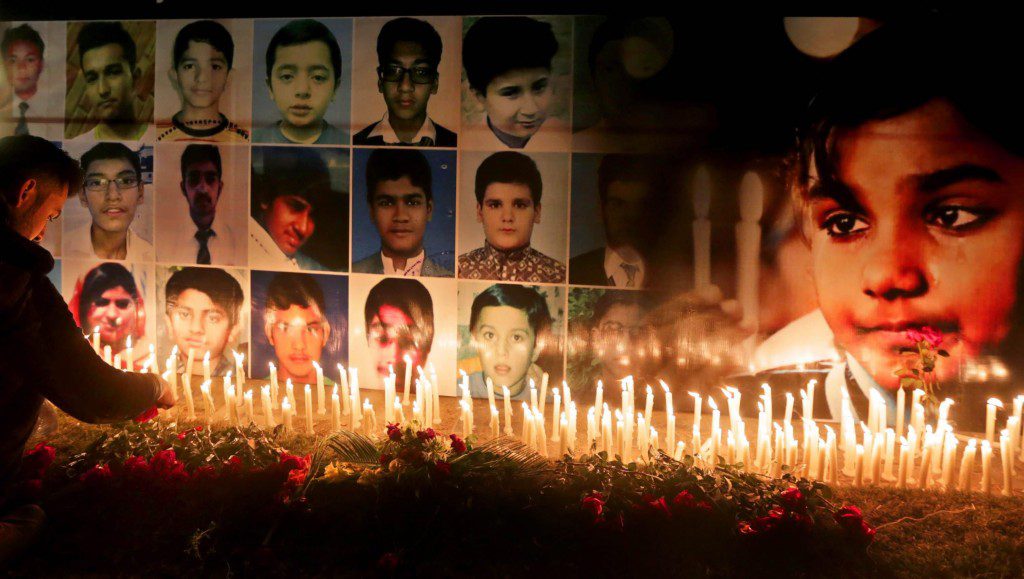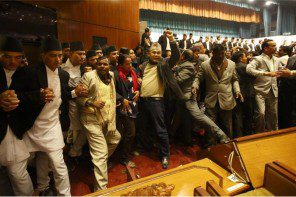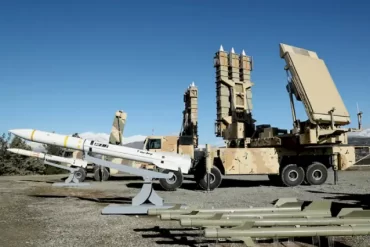While casually skimming through The Economist’s article “Taliban tumult: strains are showing among the country’s jihadist groups” from 25 October 2014 edition a few months before the barbaric Peshawar school incident, I could not contain a slight shiver from the anticipated fear of a payback. I could feel it even sitting in the safety of my Copenhagen study room surrounded by friends. I knew Pakistan, most likely Peshawar or Khyber Pakhtunkhwa (KPK) province, would have to pay a price for this leaden lull. In June last year the Pak-army started targeting Tehreek-e-Taliban Pakistan (TTP’s) sanctuaries in North Waziristan with its offensive new operation named Zarb-e-Azb. This new offensive policy once again alleviated Pakistan’s status as an ally to the West in its war against terrorism. However, it had to come with a cost. It always has. Even reading the title ran a kaleidoscope of bloody images, that has been permanently engrained in my memory, and I wondered if the article’s claims were finally true. I knew otherwise, but I hoped. For once I hoped the claims of Imran Khan, cricketer turned politician and many others with him, that the crackdown on TTP will “blowback”, are baseless. But I knew better. Living in the Peshawar, from 2006 to 2009, when it was declared the dangerous most city of the world, I ought to know better than that. Hence cutting through all the hopes, I wondered who would pay a price this time? What I did not know was that a weakened Taliban were far brutal and dangerous than the strong, as the attack on the school was the deadliest terrorist attack in the history of Pakistan. The massacre killed 150 of who 134 were children, seven militants partook who were all killed by the army.

After the war on terror and the shift of its focal point to the neighboring country of Afghanistan the city of Peshawar is no alien to terrorist attack, but last week’s attack on an army run school standout by far, for both its scale and brutality. The annual dead toll of killings by the Taliban since 2007 has never dipped lower than 2000, increasing to an average of 4000 by 2013. Though the last year has shown a decline by a third. This let the world to romanticize the lull that settled on the city after the start of the crackdown, which nonetheless has weakened the TTP to a certain degree. In the time when the West and Pakistan itself after meticulously agonizing rounds of discussions and strategy brainstorming let itself taken by the lull and paused to take a breath of relief, the incident changed everything once more. It reestablished that the bloodshed and violence for Pakistan is not over and that the country cannot let its guard down just yet. Will it bear any long term fruits, is yet to be seen. Thus, with this incident the authorities in Pakistan have once more moved into high-risk zones and reevaluated its security apparatus. Schools are closed until the security and safety of students is ensured, as the incident revealed a far brutal and wrathful face of the Taliban than ever before.
“Smallest coffins are the heaviest” as the social media resonated on the morning of the incident proved to be correct in more than one ways. Along with giving the world a heartache, this massacre exposed the country’s political, judicial and security turmoil. The fault lines seamed just before the operation, Zarb-e-Azb through painstaking efforts just before the crackdown, opens gorges once more. The country’s elite that had settled in a translucent truce on the issue is once more considering other options, if not about fighting the TTP definitely about how to fight or tackle them. Soon after the incident, when people across the country started demanding public prosecutions of terrorists, a debate about authorizing military courts to prosecute suspect terrorists flared. Judiciary strongly opposed and the government was suspicious as authorizing military courts is an extra constitutional act. However, after a series of scrupulous discussions Pakistan’s political leaders finally decided to amend its constitution in order to incorporate the alternate military court system. This decision was unanimously taken by the country’s civilian and military leadership during a meeting headed by Prime Minister Nawaz Sharif on 3 January 2015. “The bill will be presented in the National Assembly on Saturday and in the Senate on Tuesday and after it is passed by the two houses of parliament, it will become part of the Constitution,”said the Minister for Information Pervaiz Rashid.
It has been more than a decade now that violence and killings has become a daily routine for many Pakistanis. Nonetheless, this incident still stands out of the history of violence in the country. On the morning of December 16th kids went to school and never came back. One of the survivors’ account, Sharukh khan 16 years old speaking from his hospital bed in the trauma ward of Lady reading hospital, of how he escaped death is simply devastating. “Someone screamed at us to get down and hide below the desks,” he said.
“Then one of them shouted: ‘There are so many children beneath the benches, go and get them’”.
“I saw a pair of big black boots coming towards me, this guy was probably hunting for students hiding beneath the benches.” It was then that he recalls being shot just below the knees on both legs, the pain was smearing he remembers.
In that moment he decided the only way to escape death was to play dead, “I folded my tie and pushed it into my mouth so that I wouldn’t scream.
“The man with big boots kept on looking for students and pumping bullets into their bodies. I lay as still as I could and closed my eyes, waiting to get shot again.
“My body was shivering. I saw death so close and I will never forget the black boots approaching me — I felt as though it was death that was approaching me.”
Apart from his fellow students being killed before his eyes, he recollects other horrors that he had seen on day. One of them was seeing a torched corps of the school’s office assistant. According to him her body was burnt badly while she was still siting on her chair.
That day there were 134 other Sharukh khans, only not as lucky to escape death’s deadly claws. The stories unraveled of the dead are even more shattering. Mrs. Tariq’s story was one of those. She was a Post Grade teaching at the school, also eight month pregnant. Her death was one of the targeted murders where the Taliban singled her out, poured phosphorous over her and torched. The reason to single her out was her husband served in the Pak-army, Brigadier Tariq Saeed. Mrs. Kazi the principal of Army Public School was targeted for the same reason, having married a retired army Colonel Kazi Javaid. She too was torched to death.
Some of the deadliest attacks on the country were: 18 October 2007 – in Karachi on Former Prime minister Benazir Bhutto’s rally, killing 130 people, 28 May 2010 – two Ahmadi mosques were targeted in Lahore killing more than 80 people, 10 January 2013 – Hazara Shia Muslims were targeted by the Taliban in the city of Quetta leaving 120 dead, 22 September 2013 Taliban killed at least 80 people in a Church in Peshawar, 16 December 2014 – Peshawar school massacre killing 150 mostly children. With the latest incident it is believed that the country is losing its left over patience with the Taliban. With crackdown operations such as Zarb-e-Azb already in progress and now amending constitution to make space for military courts the country elite seems to have up their game to combat terrorism. For once it feels like the country – political, military, common people – have united against terrorism with zero tolerance and finally declared that enough is enough. This level of unity across the country and the no tolerance of terrorism across the board can become Pakistan’s most lethal weapon in combating Taliban. There might have been confusions about the war on terror, and many reservations, mostly genuine ones, of fighting somebody else’s war – but today it appears like a debate of the yester years. The war on terror might have started as somebody else’s war, but years of unclear policy of the political and military elite of Pakistan has entangled it a little too much with the veins of the country. And so has left only a diminishing number of ways to deal with it, the number that fades by each passing day. It is not far that Pakistan will be out of ways altogether to get rid of this curse at all. Now there is no escape from it, no matter what, as the country’s darkest nightmares have all personified in its deadliest form to haunt the nation. Hence, it seems about right time to face the demons of both the past and the present and deal with them once and for all.






